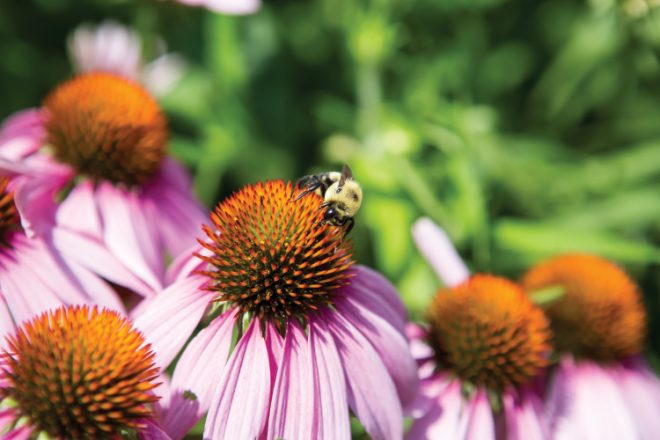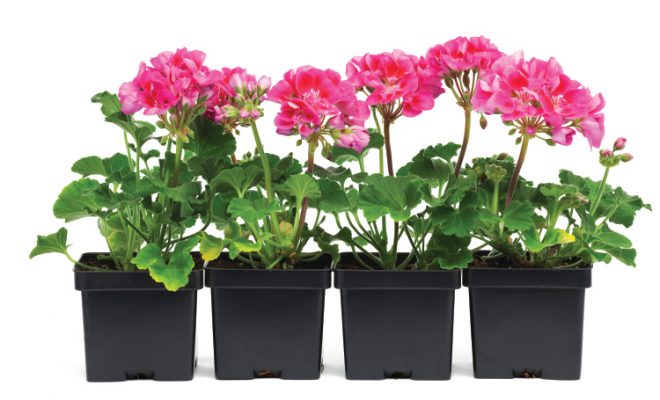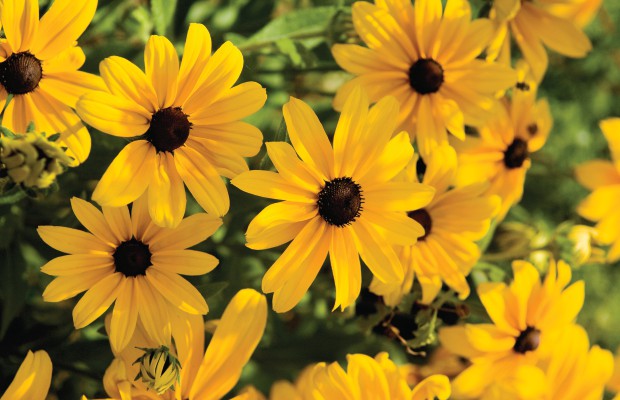
It happens every year. In early spring, you trot out to the garden to see what’s growing. Almost everything shows new growth except for a couple of plants. Cold-hardy perennials should come back every spring, right? Not necessarily. Let’s look at the reasons plants don’t survive the winter.
Like every living thing, perennials have a lifespan, which differs from plant to plant. Coreopsis dies after three years in my garden regardless of winter conditions. Other perennials live for 20 years. Peonies seem to grow on indefinitely. I think most fall into the three- to 15-year time frame.
Consistently wet soil kills perennials by rotting the plant crown. Excessive thawing during winter keeps the soil wet. A layer of ice on top of the ground locks in that moisture. Keeping the mulch pulled back from plant crowns can help them dry out faster.
Frost heave contributes to some deaths. Repeated cycles of freeze and thaw pop the plant out of the ground, exposing the roots to weather extremes. Strawberries fall into this category. The cold-hardy plants can actually handle winter quite well. The straw cover helps keep the soil frozen to mitigate frost heave.
The severity of winter temperatures determines what happens to sub-shrubs, such as butterfly bush and roses. During mild winters, the top growth survives and the plant starts growing in spring where it stopped the previous autumn. Severe winters, especially those without snow cover, kill the sub-shrub down to the ground. All of the previous years’ growth is lost, and the plant has to start over from the roots. This will be more of a problem in the northern third of the state.
Perhaps what you assumed was a perennial turns out to actually be a biennial. Biennials live for two growing seasons and then die. The first summer, they establish themselves as green plants. The second, year they flower and set seed, which finishes their lifespan.
It seems every winter a combination of things wipes out a particular plant for that year. A few years ago, everyone in my area lost their Shasta daisies. Less hardy perennials survived fine, and the explanation remains a mystery. Next year, it could be some other plant.
That said, gardeners can take some steps to increase the chances of survival. Do not remove winter mulch too soon. More plants die in early spring from big temperature swings than from winter lows.
Be sure your perennial grows in optimal conditions. A full-sun plant growing in shade enters winter already stressed.
Don’t give up too soon. Some plants don’t want to leave dormancy, waiting until everything else has been growing for several weeks or more. Butterfly bush frustrates gardeners every spring with its tardy reawakening.
This spring, I hope all your plants make an appearance. If not, perhaps now you can figure out what caused their demise.
Ask the Expert
When can I start planting my vegetable garden? I live in southern Illinois.
Average frost-free dates in your part of the state start around the end of April or beginning of May, but use soil conditions as your guide. Grab a handful of soil and make a fist, compressing the dirt. If the ball easily flakes apart, the soil has dried out enough to work without fear of causing compaction.
Will bamboo grow in Illinois?
Yes, but stick with clumping bamboo to prevent a monster taking over your yard. Hardy varieties for Illinois include umbrella bamboo (Fargesia murielae) and blue fountain bamboo (Fargesia nitida).




